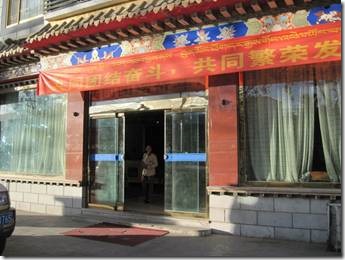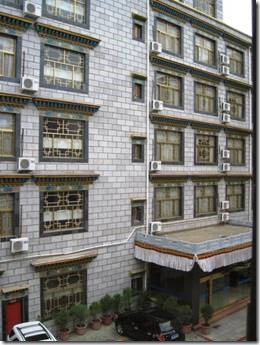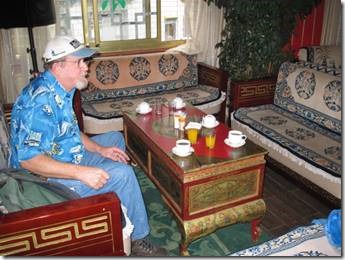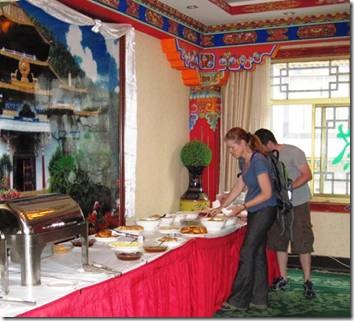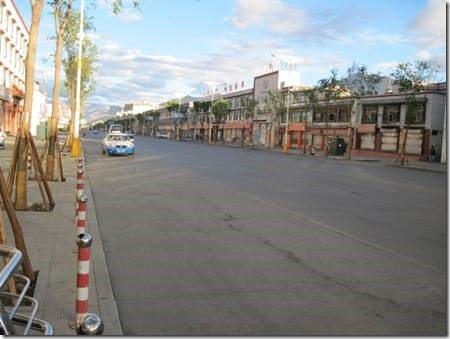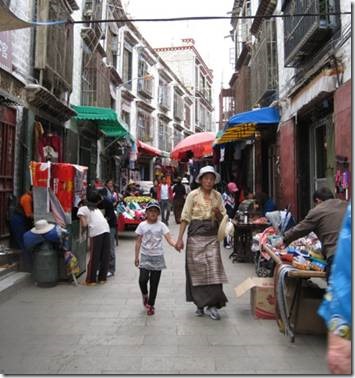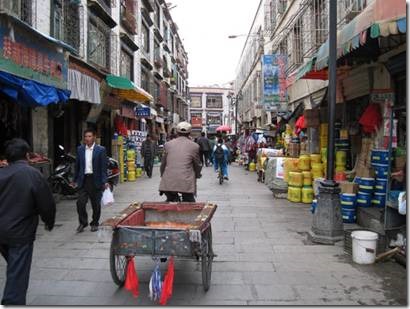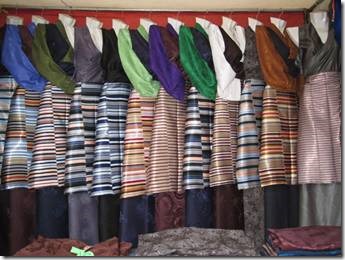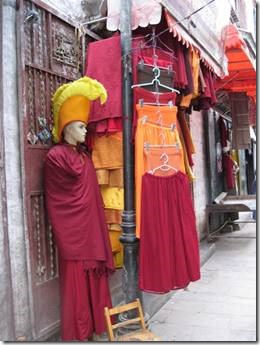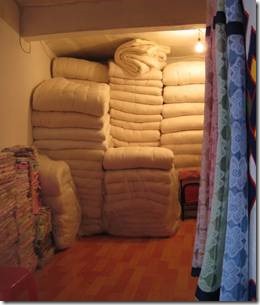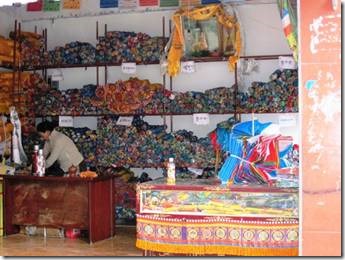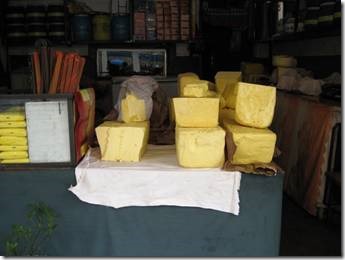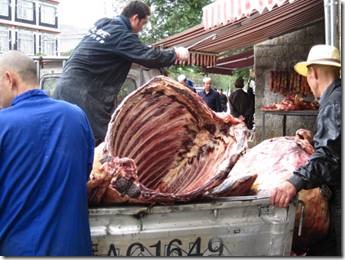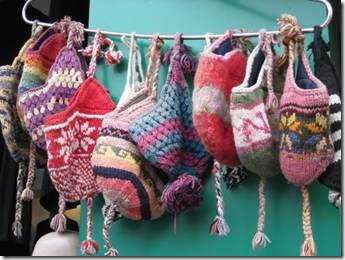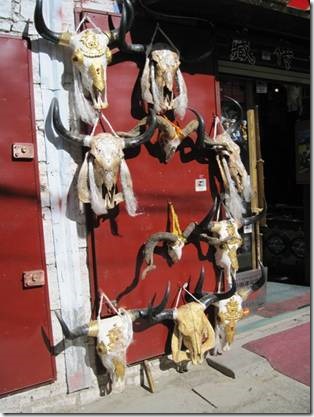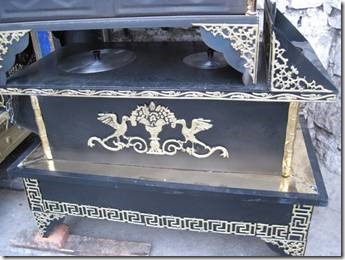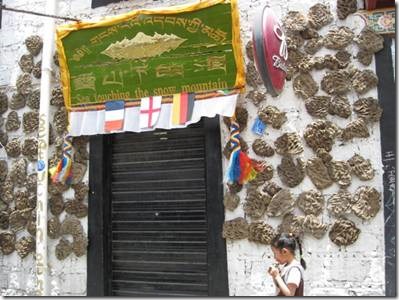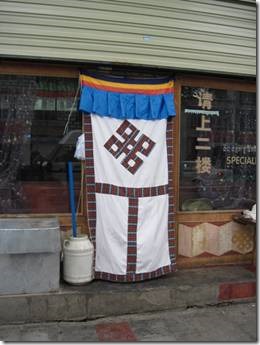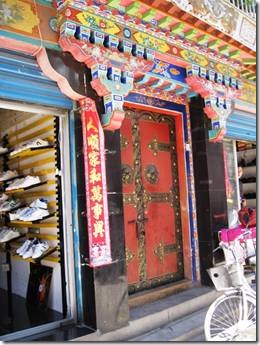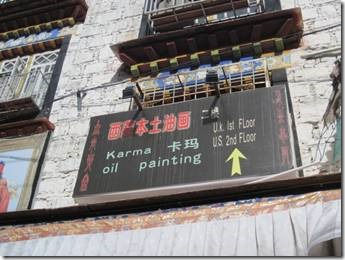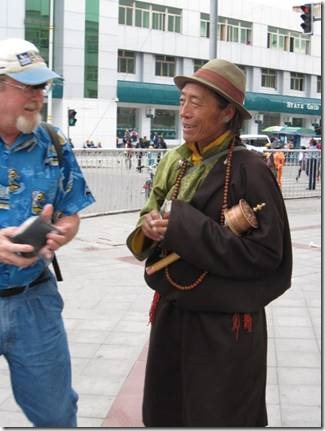Puteri Harbour Marina
Johor, Malaysia
Hi All,
Today was “go to the grocery mall” day and the marina van, per usual, was full of everyone wanting to shop or just get away for a few hours. I went off for our weekly shopping but Randal stayed on the boat with a case of Putri-itis that is similar to his Rebak-itis. Luckily no high fever this time, just a very runny nose and lots or achy tiredness. I think it’s the blahs…. Randal doesn’t agree. We just need to get back on our bikes and we’ll be fine. Hopefully this weekend. There are 3 large grocery stores within walking distance of each other. Jusco, Tesco, and Giant and they all sell slightly different products. Today, Pam, our dock neighbor and I got off at Giant and bought cheese and bread. Then we walked to Tesco where she’d heard they sold pickles so we checked and they did and I bought some too. Then we lugged all of that stuff back to Jusco where Pam stopped at the Post Office and then we finished our shopping at Jusco where the van would pick us all up. Jusco has better fruit and veggies than the other two and they also have pretty good sushi and barbecued chicken just like Kroger back in Roanoke. What’s amazing is that we all fit back into the van with all of our stuff. But everyone helps everyone and most people bring identifiable bags to keep it all separated. Back at the marina we all share the marina shopping carts to bring the supplies back to the boats. Our neighbor Bill pushed the cart down the dock so I volunteered to push it back up to the marina office. Because we’re only taken once each week, everyone loads up so the van does get very full and there’s lots to lug back to the boat. I also wanted to walk back to check with the marina office to see if they’d fixed the broken water pipe so we could finally put water in our boat. We were down to about a cupful. We had started trying to put water in the boat about 7 am yesterday. It wasn’t until about 3 pm today that I noticed the water was back on (I kept checking the spigot on the dock) and I quickly filled our tanks. Good thing because it was soon off again and our two water tanks indicator only read 2/3 full. But that will last us a while until they finally get the problem permanently fixed. At anchor you really keep an eye on how much water you have. At a marina we sometimes let it run low because we know we can always put more in. Our indicator was on the left side of the red EMPTY square before we finally could add water to the tanks. From now on when we still have 1/3 tank of water, I’m refilling for the “just in case” occasions when the water goes off. We have been other places where the water was shut off, but you’re warned ahead of time and they tell you when it will be on again. Here we had no warning and it has been off for two days. If we were desperate we could use the marina showers and washing machine. And we could use jerry jugs to lug water from Dock A where they do have water to use for cooking, washing dishes, and flushing the toilet. But the point of staying in and paying for a marina berth is that you get power and water just like you do at home….where occasionally you do lose power and water if there is a terrible winter storm or something. Here apparently it was a burst pipe about 10 days ago that still hadn’t been fixed well enough to get water to the two far docks in the marina. I’m hoping that they get tired of me asking about it and finally get it fixed. If they had come to the dock to tell us about the problem and if they’d acted as if they cared about our discomfort, I would have been more reassured. But every time I checked with them, they seemed surprised to hear we had no water. Very frustrating especially since I had spent 26 years hopping right to it when someone came into the library and asked for help. I expect that kind of service when I ask for it. Just another day in the tropics….as Randal would say.
Baseball starts again tomorrow. Yippee!!!! Go Red Sox!!!
Ru
DoraMac
Tibet # 12 Our Hotel and Around the Block
The Mandala Hotel where we stayed in Lhasa.
Nothing architecturally special about the hotel but it was clean and comfortable.
The concrete blocks are indicative of Chinese construction. “The old houses were made of drystone (without mortar,) using alternate rows of small stones and large, and this gave them a textured effect. But the new Barkhor buildings are of preshaped granite, like concrete blocks, uniform in size.” P 145 Tibet: Abode of the Gods.
You see the old style construction closer to the center of the Barkhor and parts of the monasteries. But most of the newer buildings all along the main roads from Lhasa to Everest looked like this. The older style buildings also used wood in the construction and wood is now considered a very precious commodity in the desert parts of Tibet.
Breakfast at the hotel.
Our hotel in Lhasa had the best breads at breakfast. When you walked into the dining room, you asked the chef to cook your plain egg omelet and toast. While he was doing that, a lovely waitress would bring you tea, coffee, and orange juice.
A variety of food was available to satisfy western taste, Chinese guests and Tibetan guides.
The toast that came with the eggs tasted like real, homemade bread but they had more great breads and rolls on the buffet table. Sometimes they had yogurt. They always had cereal and milk and fruit and peanut butter and jams. They also had a bowl of roasted barley flour that Tibetans mix with butter and eat uncooked. The first few days I had ordered the eggs, but towards the end of our time in Lhasa stopped eating them in favor of the bread and peanut butter. I like peanut butter more than I like eggs. The first morning I decided to skip the eggs, they made them and toast for me anyway though I hadn’t asked. I did my best not to waste them because there was no one to pass them along to and Randal had already been given his. Later on, as we traveled with Ronnie and David, they were happy to polish off what Randal and I couldn’t eat. (During our drive from Lhasa to the border we’d stop for lunch and somehow what Randal and I ordered came in large portions and what David and Ronnie ordered came in small portions.) I really enjoyed the great breads and tea and having someone else do the work! Our room had an electric kettle and Randal and I always travel with tea bags and coffee packets. We also still had the ceramic mugs that we’d bought in China to use on the train. (We finally left those mugs in our room in Kathmandu because packing them for the plane would have been difficult and most hotels that provided a kettle provide some kind of cup and some form of tea. Singapore also provided a coffee mix. ) Sometimes, at night, too tired and not very hungry, we just bought some instant noodles from the small grocery store down the way and had that with Minute Maid orange juice for dinner in our room. Breakfasts were always so huge and our lunches, when we usually shared a yak burger with fries and salad and more veggies, were also large, so by dinner we just weren’t hungry.
Our room was comfortable with lots of extra down comforters if we needed them. We had TV with a few stations including the English Language Chinese Channel available all over Asia. But most important, we had cable Internet access so we could use our new netbook. It was a very comfortable hotel and the staff was helpful and friendly though not all of them understood English. But if one couldn’t help us, she always called a staff member who could. The hotel had reasonably priced laundry service so we gave them our jeans and heavy stuff to wash. Because of the very dry climate I could hand wash almost anything else and it would be dry in no time. During our trip to China back in January and February, it was so damp that nothing dried, just molded. So there was at least one benefit from the dryness that destroyed the inside of my nose.
Early morning photo looking across and down the street from the hotel.
Usually there was enough traffic that you had to take care crossing the road. Notice that the buildings aren’t tall because of the height regulations not to obstruct the view from the Potala Palace. Behind those buildings were the neighborhoods that melted into the Barkhor so we were only a short walk from it all. One of those storefronts fairly close to the hotel is the small noodle restaurant where we ate dinner quite often. Actually, if we left the hotel for dinner, that’s where we always ate. No one spoke English so it was always interesting getting food. But the staff wanted to be helpful so we never had a problem. The first night we ate there, the day we’d arrived, another newly arrived westerners said he ordered the noodles because he’d seen someone else eating them. Randal and I pointed to his noodles and that’s what we also ate. The enormous bowl of fresh made noodles came in spicy hot broth with chopped vegetables. It tasted wonderful. One night we used the restaurant’s menu which had a few pictures. We ordered something that turned out to be cooked celery with some yak meat. It was good and there was lots of it. It came with that white doughy bread you get at Dim Sum places. Not my favorite. We also ordered something that looked like spaghetti with meat sauce because we saw one of the locals eating it. Randal really liked the spaghetti stuff so I took a photo and we would show them the photo when we went for dinner other nights. One day while we were walking through the Barkhor I bought a kid’s picture book of fruit and veggies with their Chinese and Tibetan names written next to them. (I’d left my traveler’s picture dictionary on the boat thinking we wouldn’t need it because we really hadn’t needed it anywhere for a long time.) That night at the noodle restaurant Randal used the camera spaghetti photo to order his spaghetti dish. I pointed to a picture of an eggplant in my book and they cooked me a giant plate of eggplant. It went quite well with Randal’s spaghetti. We used the book again during our stay in Shigatse where they cooked us an entire giant head of broccoli!
Next some back streets near our hotel back off the main road.
These streets were lined with all kinds of small shops that opened onto the street.
I’m guessing that there were shops on the ground floor and living space above.
A shop selling traditional Tibetan dresses and aprons.
This shop sold clothing for monks and nuns. I remember in Rome being surprised to see shops selling clothing for priests. I honestly don’t know in either case if you have to buy your own or you’re given them when you join the religious life.
Our hotel room had 4 of these huge down quilts so they must sell by the hundreds. They’re wonderful.
This shop sells prayer flags. I read in the Erickson book that they weren’t allowed during the Cultural Revolution. Now we certainly saw them again all during our travels.
Yak butter which is used for food and for the butter candles in the monasteries and nunneries.
Yak meat which we really liked and I’m not really a meat eater but it was the novelty of it all. Absolutely every part of the yak is used: meat, butter, milk, wool, skin, tail, horns and “dung.”
Yak wool hats? Or some kind of wool anyway.
Georgia O’Keeffe would have loved Tibet. These horns actually look smaller than the ones on the live yak I met. You can buy the skulls all over the Barkhor.
A stove for burning yak dung. The dung is dried and used as fuel in the stove. I don’t remember it smelling bad, but it was smoky.
Yak dung drying on the outside of this building. Usually it’s on the roofs.
These quilt like covers are placed over doors to keep out the cold. They are made from cotton material and not yak. We saw them everywhere.
There were lots of decorative doorways to very simple areas behind. Lobsang said Tibetans liked decorated doorways.
Randal and I are always confused about what is considered the 1st floor or the 2nd floor. This sign explained it. We visited the art gallery and they did have some wonderful paintings that captured the amazing faces of the Tibetans and their way of life. We just looked. I really do prefer watercolor and these were all oil.
One of the newer main roads that were built by the Chinese. Lobsang told us that 20 years ago there were very few cars and few roads for them. You can see rickshaws which I saw used more by locals than tourists. The taxis had meters they didn’t use, but the fares were reasonable unlike in George Town. You can see the Potala Palace up above it all.
Randal gave a donation to his new friend. Buddhism encourages the asking for and giving of alms.
It was around lunch time and this group of adults and kids were having lunch. I don’t know if the adults were parents or teachers or what. It was just nice to see them all eating together. I love the interaction between the woman and small boy in the center and how they are focused on each other.
We only saw a small part of Lhasa and none of its night life so ours is a very limited perspective. I was very taken by it. We left Lhasa and our first stop was Shigatse where we stayed overnight before moving on to Everest Base Camp. It was during this overland trip that we saw the most amazing scenery. We also encountered many Chinese checkpoints which we weren’t allowed to photograph but we could use their toilets. That was helpful since I was the only one in our van who couldn’t just pee along the side of the road along this totally tree-less route.

